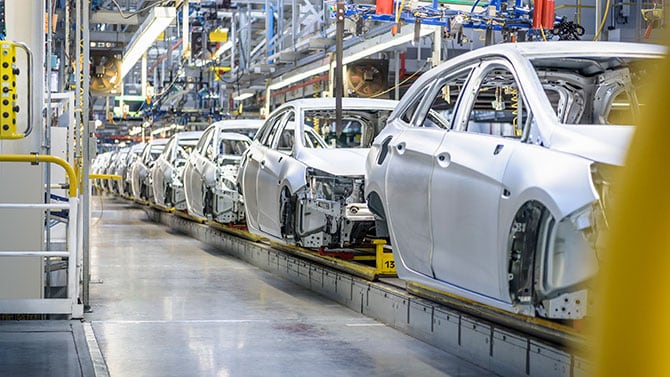{{item.title}}

How will automobile factories change during the next decades as electric and autonomous vehicles come of age? How should auto companies and suppliers prepare strategically and operationally for these changes?
It is impossible to predict precisely what types of vehicles will be leading the market a decade from now, but no matter how successful the shift to electric, autonomous and shared vehicles is, the composition and operations of automobile factories will change in radical ways.
For one thing, during the next ten years and beyond, OEMs will be compelled to corral factory costs, primarily because the fulsome research and development and M&A outlays they made in order to design and develop entirely new kinds of automobiles could cut deeply into potential profits. As a result, the role of robotics and automation in factories will rise exponentially as machines are increasingly relied upon to speed up assembly processes and reduce expenses. Smaller crews will be needed to build electric vehicles, which have fewer parts and simpler drive trains than internal combustion engine automobiles. The combination of these factors will likely slash the global auto industry workforce at least in half by 2030.
And while automakers and suppliers manage the downsizing and automating of their factories, they will have to turn their attention to recruiting and training workforces unlike any they have had before. This new group of employees will be much more digitally oriented and comfortable with new technologies than prior generations of autoworkers. Indeed, the number of required data engineers will expand by 80% or more in some automobile factories, while the number of software engineers needed will expand by as much as 90%. R&D teams will also have to be beefed up — and their output will have to speed up. The time required between R&D and the point of production could shrink from three to five years today down to two years or so, in order to keep pace with technological and design changes. One strategy for accelerating R&D functions may be to hand over lower- level routine decisions and paperwork to robots with artificial intelligence capabilities.
It is possible that auto factories of the future will fall into two categories: One will be a highly automated ‘plug and play’ plant producing large volumes of cars with minimal variations among vehicle types for the discount arena; the other will produce customised, premium vehicles — including, but not limited to, those for the combustion engine, EV and AV markets. Today’s production lines, while allowing for some degree of product customisation, are not flexible enough for these scenarios, in which autonomous guided vehicles will take each car on its own unique route between assembly stations. OEMs might retrofit some of their existing factories, but they will need to decide on a case-by-case basis whether and how this makes economic sense. And in a plug-and-play plant, one in which OEMs are asking suppliers to deliver more and more preassembled modules that can be fitted by robots into a range of vehicles, automaker profits could be at risk: as complexity passes to the supply chain, so does value.
Clearly, automakers and suppliers have huge challenges ahead as their primary product morphs in unorthodox ways. But it is critical that they also focus on how their factories will evolve and be able to manage costs and operations through this period of critical change.

